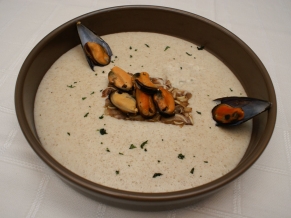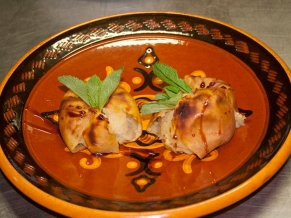Iron Age Cuisin
The Castro palate
The Iron Age societies left a profound impact in Galician art, legends, landscape and food. In Vimianzo, just like in the rest of the Costa da Morte, its presence is evident in the forts (called castros) and archaeological sites that are found at every turn.
Vimianzo’s cuisine recovers the local flavors of the castros like those of Barreiras, the now disappeared ones of Castrobuxán, and the one that silhouetted against the hill where the castle is. It does so through preparing dishes highlighting the local idiosyncrasies, like stews, casseroles, and, of course, using fish and shellfish of outstanding quality from the region’s main ports, Laxe and Camariñas.
More conger than wild boar
Despite the popular belief of medieval Castro cultures as being heavy consumers of meat, this is not the case, neither for the ancient dwellers of Vimianzo nor from anywhere else in the area. The Iron Age society is mostly agricultural, and the staples of their diet were mostly vegetables, legumes and cereals. Using these products they prepared mostly soups, porridges, stews, and casseroles, complemented with some animal protein, similarly to today’s cuisine. Meat and dairy were served along with the vegetables and cereals, and Vimianzo being so close to the sea, so too were fish and molluscs.
Sea products were of great importance in the gastronomy of the Castro period, and were even imported into the inner regions.


